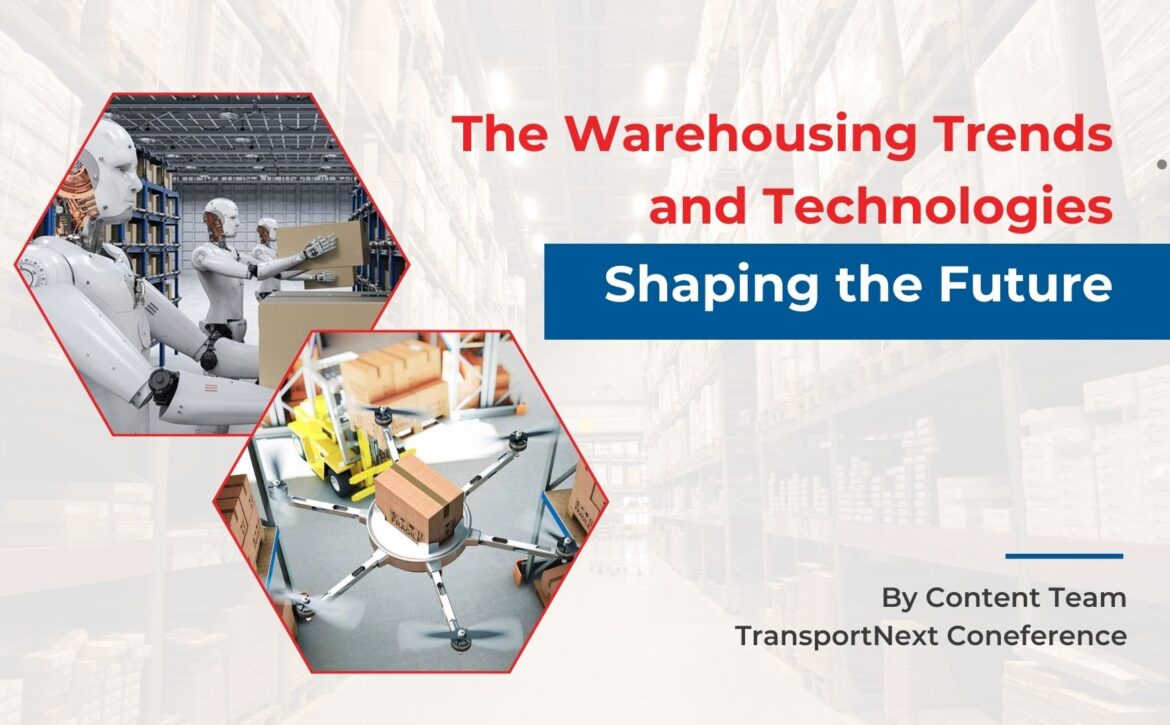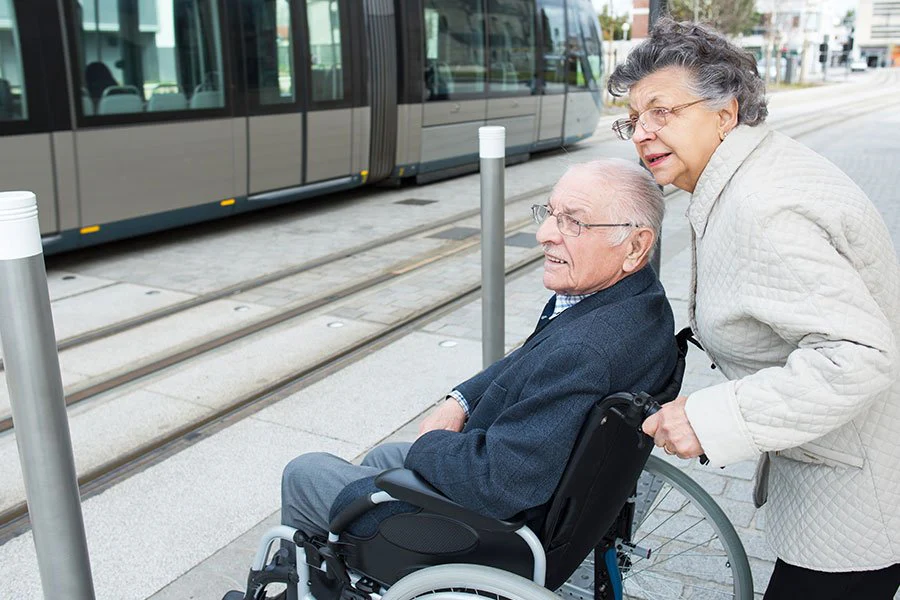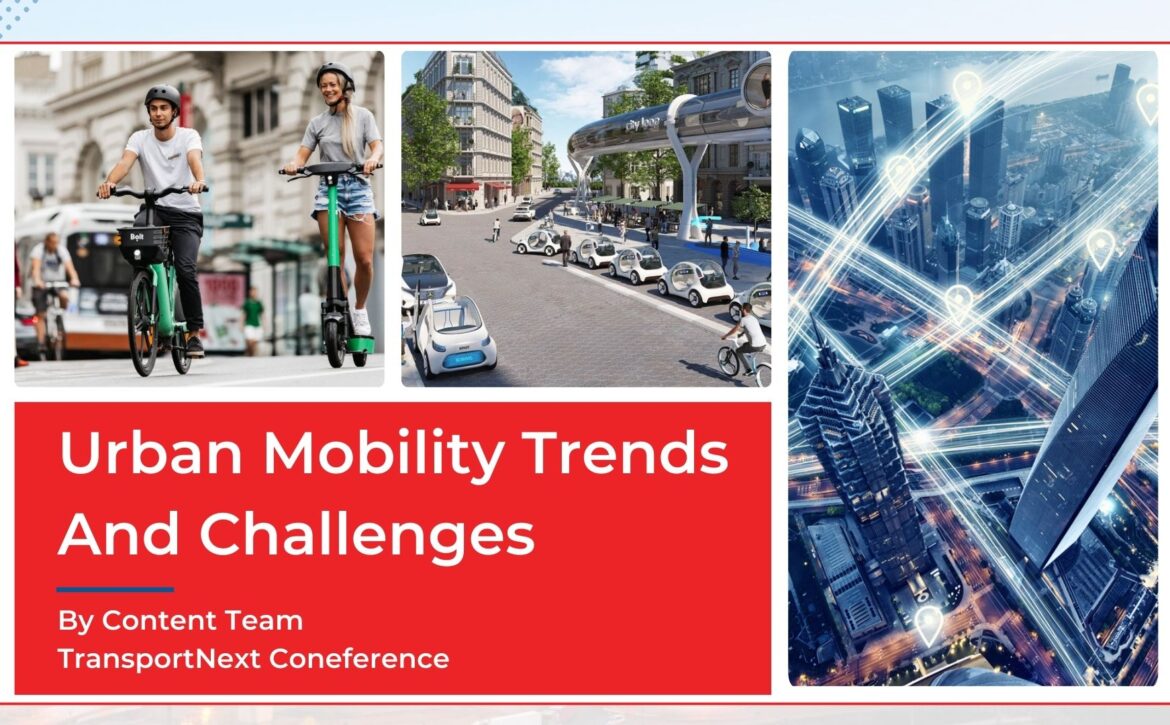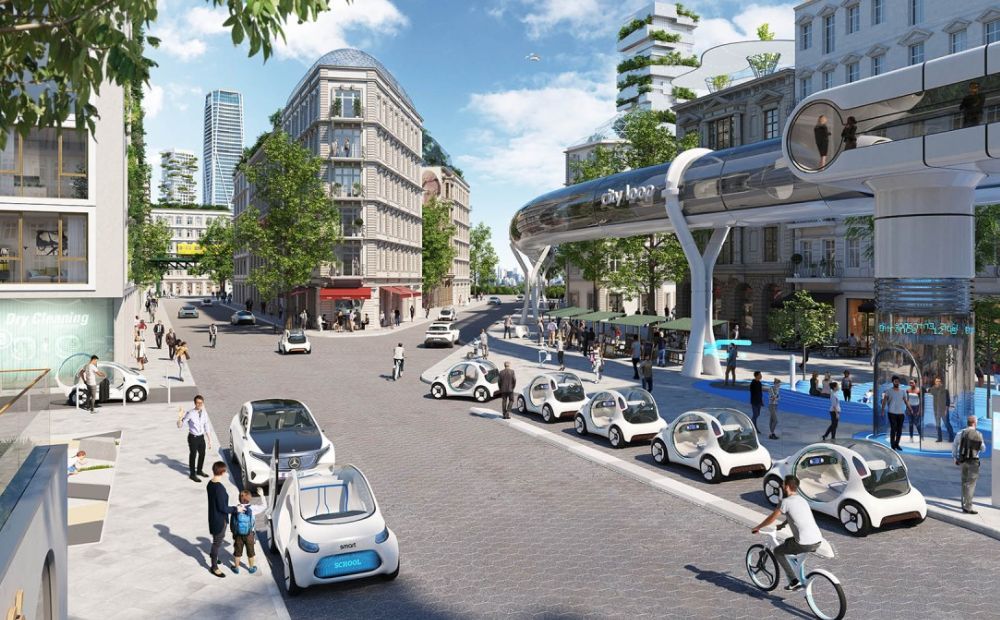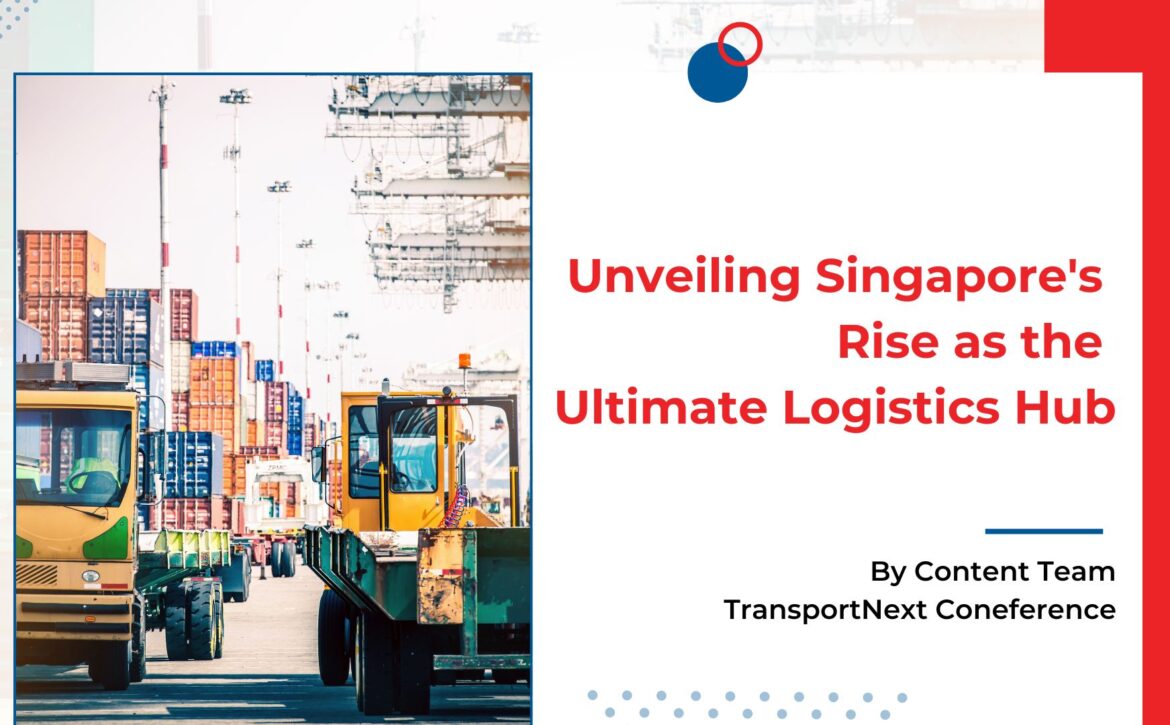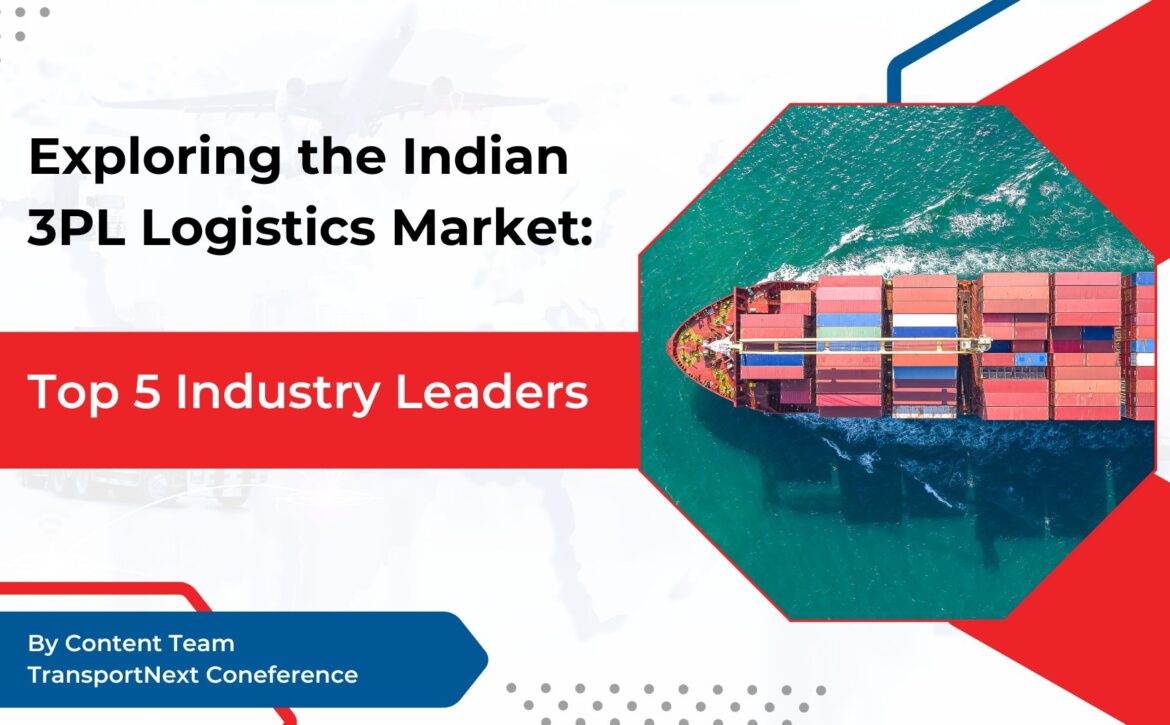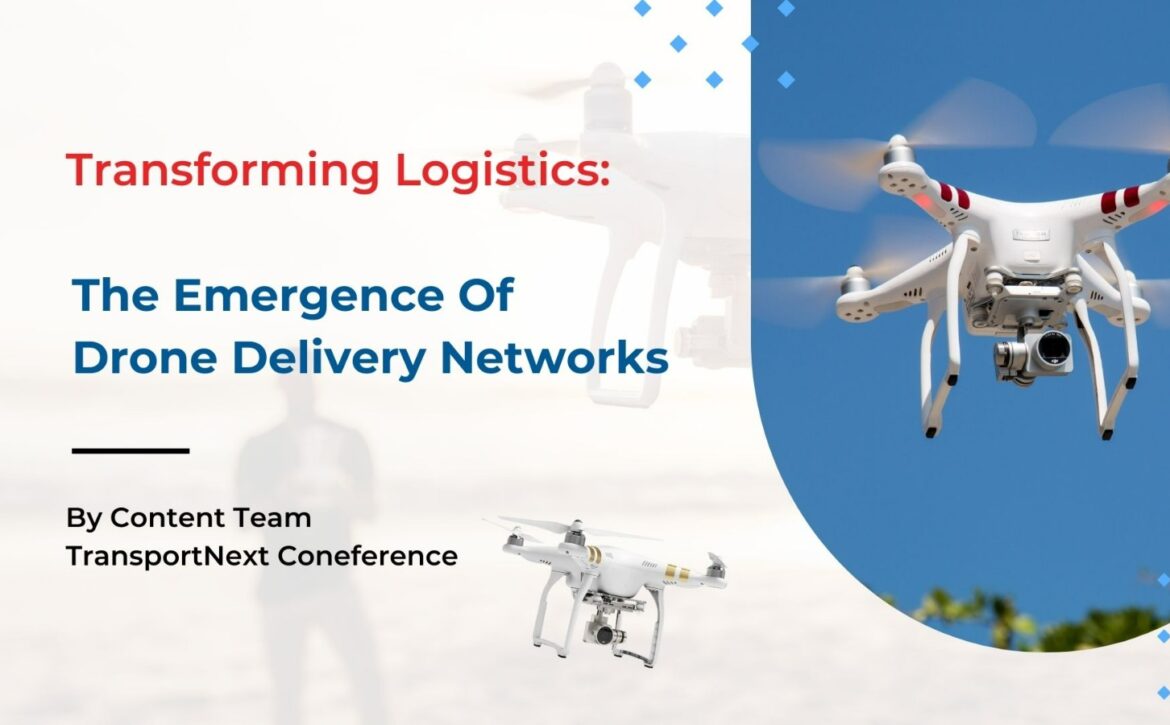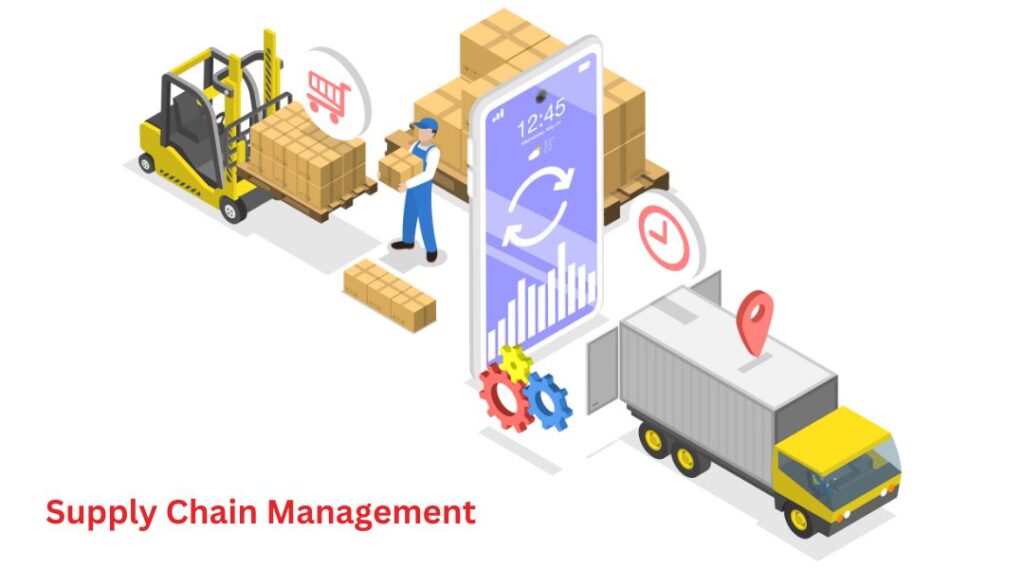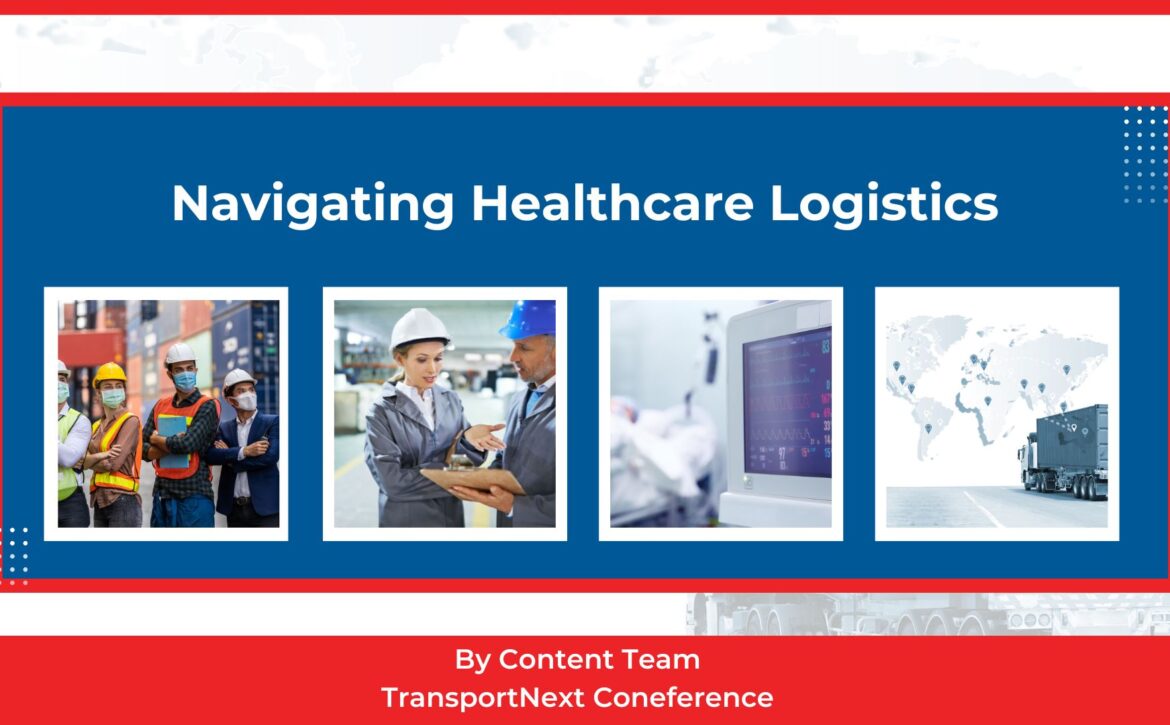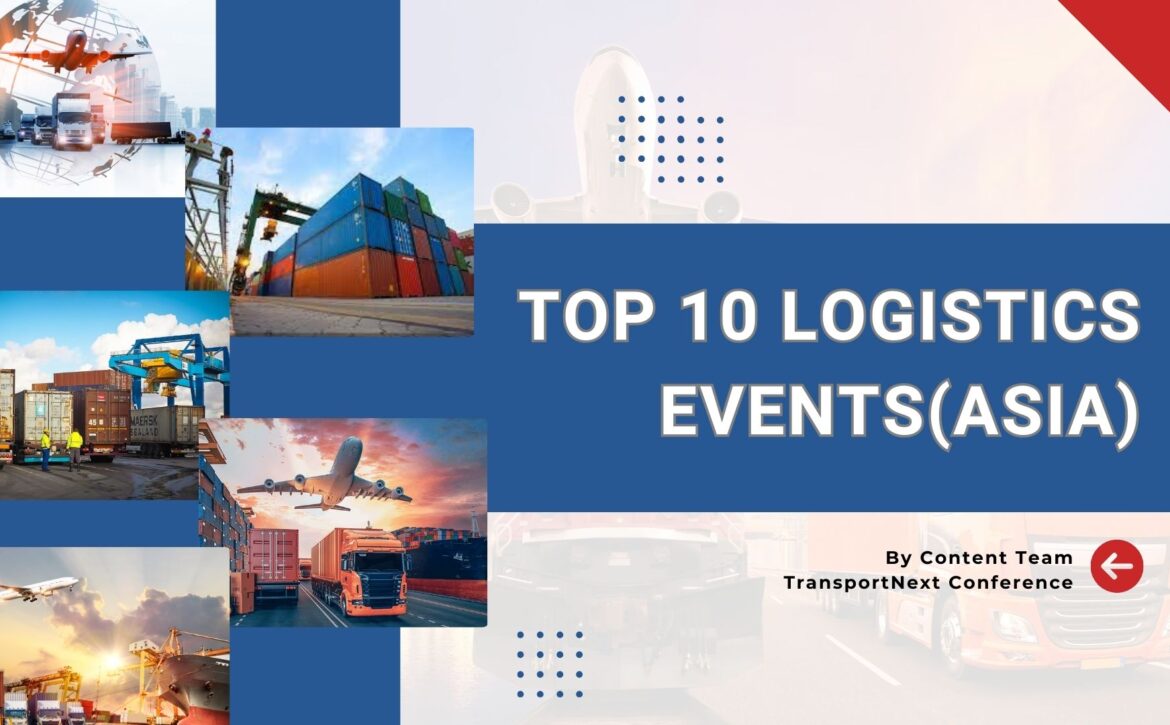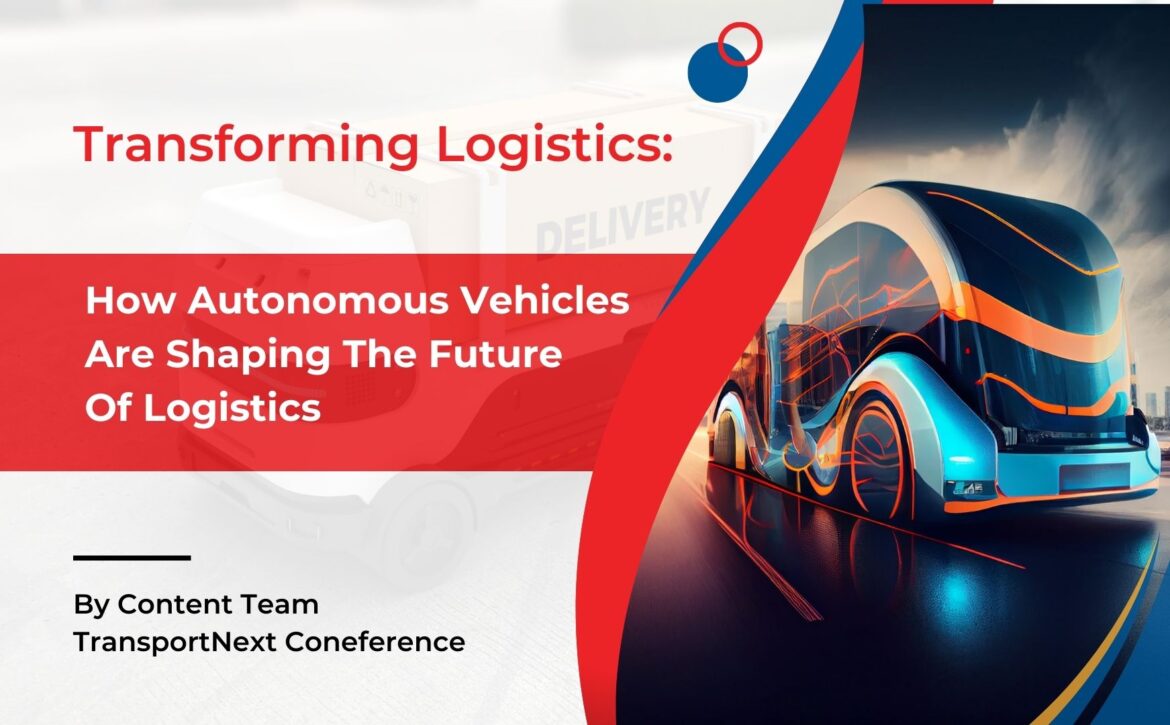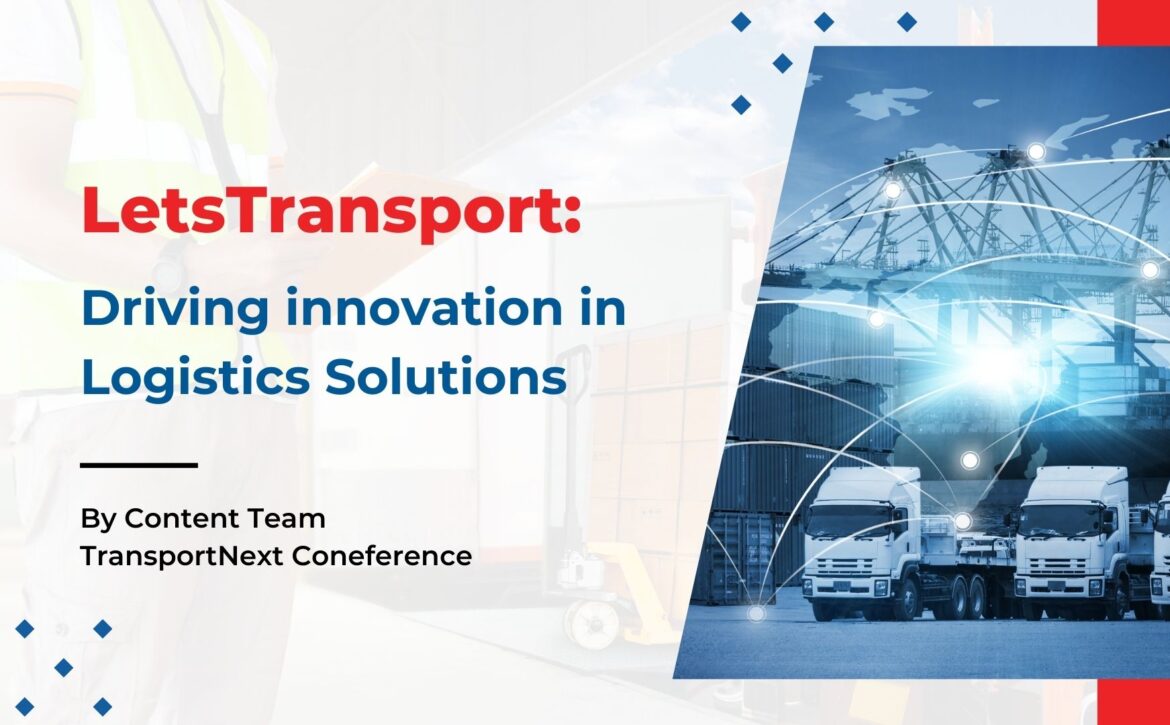The Warehousing Trends and Technologies Shaping the Future
Warehousing Trends and Technologies
If you are looking for a good article of Warehousing Trends and Technologies, you landed on a right page. The article will tell you all about the Warehousing Trends and Technologies shaping the future. Please read below
Warehousing plays a Vital Role in Modern Supply chains, facilitating efficient order fulfillment and ensuring customer satisfaction. Efficient Warehousing processes are essential for effective Logistics and supply chain management. They enable rapid and precise fulfillment of customer orders, resulting in improved inventory management and optimal space utilization. Consequently, this minimizes expenses associated with storage and transportation.
Table of Contents

Warehousing Trends and Technologies
Warehousing Processes
Warehousing processes can be broadly categorized into two major categories:
Primary and Secondary
Primary Processes include steps like Receiving and Logging process, Put-Away Goods process, Storing Goods process, Picking Goods process, and Packing and Shipping processes which enable quick, accurate fulfillment of customer orders, ensuring better inventory control and space utilization which leads to reduced costs in storage and transportation.
The Secondary processes includes steps like Dispatching, Kitting (bundling), Casing (which is the most important part in Logistics of fragile goods), Inventory Monitoring with Software, Value-added Customized Assembly like welding, machining etc, managing returns, accessing reports and analyzing data, and Initiating damage control which can enhance efficiency and improve overall performance in supply chain. This article delves into transformative trends and technologies driving the evolution of warehousing, with real-world examples illustrating their impact.
Warehouse Automation:
Warehouse Automation is revolutionizing traditional labor-intensive operations, with startups leading the charge by integrating advanced robotics. These technologies, such as automated guided vehicles and autonomous mobile robots, streamline processes like inventory picking, palletizing, transportation, and inspection. These include a variety of robots such as cobots, drones, goods-to-person robots, and driverless forklifts, all contributing to the automation of warehouse operations. For instance, companies Ware are manufacturing autonomous drones designed for indoor warehouse use.
These drones utilize AI and geolocation tech to navigate and scan inventory, creating a digital twin of the facility for efficient inventory management. Similarly, Peer Robotics develops collaborative mobile robots that learn from human operators, enhancing material handling and enabling automated inventory tracking through gesture and command recognition. Amazon’s Fulfillment Centers have been at the forefront of warehouse automation, deploying robots to handle tasks such as picking, packing and transporting goods. These robots collaboratively with human workers, increasing efficiency and reducing errors.
Warehouse Management Systems:
WMS streamline the collaborative process of tracking, storing, and transporting inventory, which involves various stakeholders. Visualizing real-time changes can be challenging as each party works independently. WMS simplify warehouse operations, allowing managers to oversee activities from receipt to dispatch. These systems leverage big data and AI for analytics, optimizing performance and processes. For example, Chinese startup Multiway offers a WMS enabling warehouse managers to visualize processes, monitor operations, and manage inventory efficiently. Additionally, it includes features for customer site management and performance analysis, reducing errors and enhancing control.
Similarly, Indian startup Tradexa provides warehouse inventory management software called Hyper Inventory. This centralized system manages activities across multiple warehouses, facilitating control overpricing, inventory, delivery, and reputation across all channels. Powered by AI, it offers insights into inventory forecasting, product performances, and financial analytics, streamlining warehouse management tasks.
Inventory Management:
Warehouse managers must meticulously track all items moving in and out to prevent inventory loss from spoilage, damage, or theft. Inventory tracking solutions mitigate human errors and enhance supply chain transparency.
Cutting-edge technologies like Radio Frequency Identification (RFID) surpass barcoding limitations by enabling remote and simultaneous tag detection and reading. Optical Character Recognition(OCR)expedites warehouse processes by digitizing printed, typewritten, or handwritten documents for swift database integration.
For instance, Octorite Technologies, an Indian startup, develops a tunnel-based RFID scanning system featuring proprietary antennas.This system initiates reading when a trolley or pallet is correctly positioned, communicating with RFID hardware via the iTrack software to read up to 1000 tags per second. Octorite’s solution accelerates tag scanning, automating warehouse operations efficiently. Similarly, Fiber, a Nigerian startup, offers a user-friendly inventory management app tailored for small businesses.
This app allows businesses to monitor inventory levels, record sales, and print receipts from any device, ensuring accurate stock records, including expiry dates and financial transactions. With features like staff accounts for mobile sales, Fiber simplifies record keeping and detection of potential issues for small businesses.Alibaba’s harnesses AI and predictive analytics to forecast demand and optimize inventory management in its smart warehouses. This proactive strategy enhances resource allocation and order fulfillment efficiency.
Wearables
Warehouse operators navigate fast-paced, decentralized environments, striving to perform tasks efficiently within tight schedules. To facilitate seamless movement and enhance productivity, wearable technologies have emerged as indispensable tools.Devices like smart glasses and intelligent gloves not only provide hands-free mobility but also offer detailed insights into warehouse items, empowering workers in their tasks. For instance, Italian startup AGADE pioneers exoskeletons tailored to assist operators during manual material handling. Leveraging patented technology, AGADEs exoskeletons dynamically adapt to compensate for physical exertion based on the user’s movements and payload.
By alleviating muscular strain and enabling operators to handle heavy inventory weighing up to 25kg without straining the spine, AGADE’s solution optimizes warehouse operations. Similarly, US-based startup Ox revolutionizes warehouse efficiency with its smart glasses equipped with machine learning and augmented reality (AR) capabilities. These glasses leverage batching and pick walk optimization technology to enhance the accuracy and speed of inventory picking. Featuring built-in scanners and real-time messaging functionality, Ox’s smart glasses streamline communication among warehouse staff while automating pick routing, resulting in maximized productivity and operational efficiency. These examples illustrate how wearables such as exoskeletons and smart glasses are revolutionizing warehouse operations, enhancing worker mobility, productivity, and safety.
Internet of Things (IoT)
Warehousing startups are leading the charge in developing IoT solutions to revolutionize process control and optimization. These innovations include:
Asset Tracking with Connected Sensors:
Startups are deploying connected sensors throughout warehouses to track assets and monitor environmental conditions like temperature, humidity, and lighting in real-time. This data enables precise inventory management and analytics, improving operational efficiency. For example, smart shelves equipped with IoT technology broadcast stock information and issue alerts for restocking when inventory levels are low.
Digital Twins for Real-Time Warehouse Modeling:
IoT technology is also being utilized to create digital twins of warehouses, providing real-time models of operations. By extracting data from networked devices and management systems, these digital replicas allow warehouse managers to visualize Operations, locate inventory, and simulate layout and workflow changes for optimization.
Scratch Nest:
Leading the charge in immersive reality solutions for warehouses are startups such as Scratch Nest.
This Indian startup produces compact IoT beacons with extended battery life, enabling precise location tracking of inventory and personnel. Using Bluetooth low energy (BLE) technology, these wireless transmitters send signals to smartphones or tablets, aiding operators in effectively managing assets.
Celona:
A US-based startup, Celona offers an end-to-end 5G LAN solution tailored for warehouse automation. Their private 5G network setup supports autonomous robots and vehicles requiring real-time computing, optimizing connectivity and reducing operating costs.
Hazel Technologies:
This Chicago-based startup specializes in IoT solutions for warehouse produce management. Their sensors monitor factors such as temperature and humidity to extend the shelf life of perishable goods, reducing waste and improving supply chain efficiency. DHL, a global logistics leader, has embraced IoT and sensors to create intelligent warehouses. By monitoring environmental conditions and inventory levels in real-time, DHL’s smart warehouses optimize operational efficiency and ensure product quality. This data-driven approach enables proactive maintenance, minimizing downtime and reducing the risk of costly equipment failures.
Immersive Tech
The efficiency of delivering products within warehouses relies not only on equipment but also on the skills of personnel. To ensure employees perform at peak levels, warehouses are increasingly adopting immersive reality solutions. Virtual and augmented reality (VR/AR) technologies streamline the implementation of new procedures, aid in warehouse expansion planning, facilitate predictive modeling, and optimize delivery processes. Virtual reality is enhancing employee proficiency through immersive training in warehouse tasks, while augmented reality is utilized in product search processes, providing optimal routes to items. Immersive reality technologies improve decision-making by visualizing warehouse operations.
Warehouses Solutions
Examples of startups leading the way in immersive reality solutions for warehouses include:
EHS VR:
This UK-based startup offers a platform for warehouse employee training using virtual reality. Their VR-based forklift training prepares warehouse personnel for forklift operation, monitoring progress and providing personalized training without the need for physical equipment.
FlashQ:
A Canadian startup, FlashQ, develops virtual waiting AI to assist trucks in avoiding congestion by remotely waiting at logistics facilities. This innovative solution not only saves costs on fuel and penalty fees but also reduces pollution, delivering significant economic and environmental benefits for the trucking industry. These examples illustrate how immersive reality technologies are transforming warehouse operations, enhancing training efficiency, optimizing processes, and driving sustainability.
Sustainable Warehousing:
Sustainable warehousing In the realm of sustainable warehousing, startups are pioneering innovative solutions to minimize environmental impact and promote eco-friendly practices. These initiatives focus on reducing waste, optimizing energy usage, and adopting sustainable materials.
For instance, German startup Rocket Solution offers sustainable warehouse storage solutions utilizing shuttle technology to maximize capacity with minimal space requirements. Their system incorporates IoT and cloud computing for app-based warehouse monitoring, while prioritizing durable components, local production, and low energy consumption to improve sustainability. Similarly, Australian startup Great Wrap provides compostable pallet wraps made from food waste, offering an eco-friendly alternative to traditional petroleum-based wraps. Their compostable packaging breaks down into carbon and water within weeks, leaving no harmful toxins behind and decarbonizing packaging operations in warehouses.
Additionally, industry leaders like IKEA are integrating sustainability into warehousing operations through investments in renewable energy. By installing solar panels and energy-efficient lighting systems, IKEA reduces carbon emissions and operational costs, setting a precedent for environmentally responsible warehouse management.
Autonomous Vehicles
Autonomous vehicles play a crucial role in modern warehousing by enhancing efficiency, safety, and productivity. These vehicles operate without direct human intervention, performing various tasks such as material handling, transportation, and inventory management within warehouse facilities. Here are some examples illustrating the role of autonomous vehicles in warehousing.
Automated Guided Vehicles (AGVs):
AGVs are self-guided vehicles equipped with sensors and navigation systems that enable them to move around warehouses autonomously. They are commonly used for transporting goods between different locations within the warehouse, such as from storage areas to loading docks. For example, Swiss log’s Carry Pick AGVs are utilized in warehouses for automated order picking and transportation of goods to packing stations. Autonomous Mobile Robots (AMRs)AMRs are mobile robots equipped with sensors, cameras, and onboard computers that enable them to navigate and perform tasks autonomously.
They are versatile and can be used for various warehouse applications, including picking, packing, and inventory replenishment. One example is Fetch Robotics’ Cart Connect AMRs, which autonomously transport material carts between workstations in warehouses, reducing the need for manual labor and increasing efficiency. Driverless Forklifts Driverless forklifts, equipped with navigation systems and robotic arms, can autonomously navigate warehouses and handle palletized goods. They can pick up, transport, and stack pallets without human intervention, improving efficiency and safety in warehouse operations. For example, Toyota Material Handling’s Automated Guided Forklifts (AGFs) are used in warehouses for automated pallet handling tasks, reducing labor costs and increasing throughput.
Autonomous Inventory Drones:
Inventory drones equipped with cameras and sensors can autonomously fly around warehouses to scan and capture inventory data. They provide real-time visibility of inventory levels and locations, enabling warehouses to maintain accurate inventory records and streamline inventory management processes. For example, PINC Solutions’ autonomous drones are used in warehouses for aerial inventory tracking and management, improving inventory accuracy and operational efficiency.
Fleet Management
Fleet management in a warehouse context involves overseeing and coordinating a variety of vehicles and machinery used for material handling and transportation tasks within the facility. This includes managing the operation, maintenance, and utilization of equipment such as forklifts, pallet jacks, automated guided vehicles (AGVs), conveyor systems, and even drones. The goal of fleet management in warehouses is to optimize the efficiency, safety, and productivity of material handling operations while minimizing downtime and operational costs.
This typically involves tasks such as scheduling maintenance, monitoring equipment performance, ensuring compliance with safety regulations, and optimizing routes for transporting goods within the warehouse. For instance, Latvian startup forkNAV offers forklift management software designed to streamline and optimize forklift operations in warehouses. Their solution automates task allocation, eliminates manual work order distribution, and provides insights into forklift utilization for process improvement.
Similarly, Belgian startup GemOne develops Onyx, a telematics system tailored for tracking vehicles and machinery in warehouses. Onyx monitors data about warehouse equipment, utilizes rugged hardware for durability, and translates data into actionable insights for real-time fleet monitoring and operational improvements. Additionally, other startups pioneering fleet management solutions for warehouses include QuikCorp. This US-based startup provides fleet management software to optimize diverse warehouse vehicles, enabling traffic control, interoperability, and automated task allocation.
Fleet Optic:
A UK-based startup specializing in telematics solutions, Fleet Optic offers real-time monitoring and analytics for warehouse fleets, tracking vehicle location, performance, and health to improve operational efficiency and driver safety.
Warehouse Security
The importance of warehouse security has escalated for warehousing firms due to the high value of their stored inventory, rendering them appealing targets for theft. To protect their assets, warehouses are implementing sophisticated security measures like alarm systems, video surveillance cameras, smart locks, and broken glass detectors. Furthermore, there is a growing adoption of cloud-based solutions and the transmission of data across distributed networks to bolster security. Addressing the threat of data fraud, warehouses are implementing cybersecurity solutions to protect sensitive information. Technologies like blockchain are being leveraged to increase transparency and traceability in supply chain operations.
Cyber risk management systems enable warehouses to assess and remediate security gaps effectively. For example, US-based startup Eagle Eye Video Surveillance manufactures warehouse security cameras designed for round-the-clock monitoring of storage facilities, helping prevent burglaries and thefts. Their power-over-Ethernet system enables high-resolution live video broadcasting to multiple warehouse locations through a single Ethernet cable. Similarly, Australian startup CyAmast provides an IoT cybersecurity solution to enhance warehouse network security. Their proprietary technology maps and monitors network devices, providing detailed insights into data usage and access. This enables warehouse managers to detect and respond to any anomalous network activity in near real-time, ensuring efficient operations and safeguarding against security compromises.
Conclusion
The evolution of warehousing is propelled by a convergence of technological advancements, evolving consumer expectations, and environmental imperatives. By embracing trends such as automation, IoT, AI, and sustainability practices, companies can cultivate agility, efficiency, and resilience within their supply chain networks. Looking ahead, ongoing innovation in warehousing will be indispensable for meeting the dynamic demands of global commerce.
The emerging trends in warehousing not only enhance operational efficiency and decision-making but also facilitate risk mitigation and promote safe labor management. Moreover, these innovative solutions are instrumental in fostering the transition towards sustainable warehouse practices. As warehouse operations grow increasingly intricate, advanced robots are adapting to these changes while prioritizing worker-friendly designs. Recognizing and leveraging new opportunities and emerging technologies is paramount for businesses seeking to gain a competitive edge in the evolving landscape of warehousing.
The annual premier worldwide event, the TransportNext Awards, Conference and Expo organized by Next Business Media in Singapore and the United States presents an opportunity to delve into various trends, solutions and innovations in warehousing systems. The transport and logistics community throughout the rest of the world is served by the Singapore edition. By taking advantage of Singapore’s advantageous position, it offers a forum for global cooperation and knowledge sharing.
TransportNext Singapore provides enlightening talks, engaging workshops, and a large expo. It also highlights innovative solutions and promotes strategic alliances. The TransportNext Awards, which honor achievements in the sector, are the focal point. This Logistics event guarantees an unmatched networking and growth-promoting experience because of its global reach and dedication to Logistics and Transportation industry improvement.


